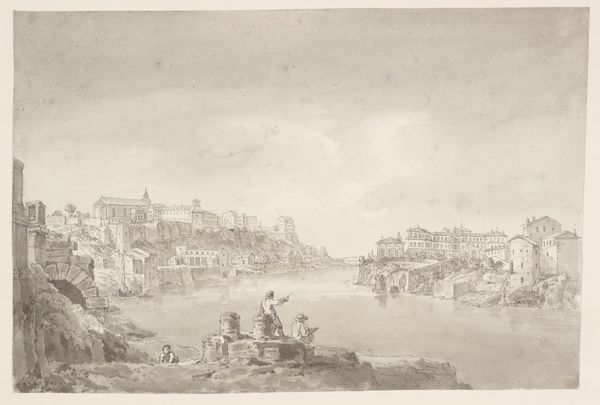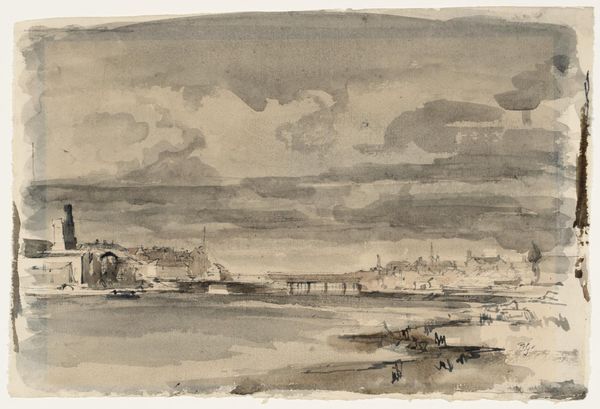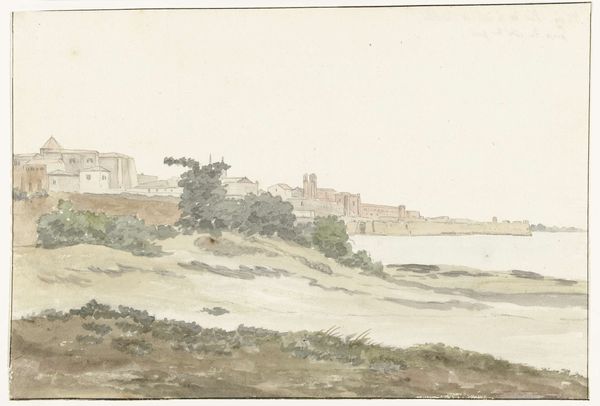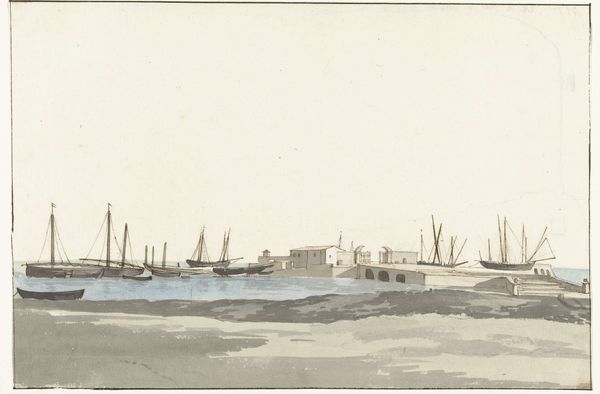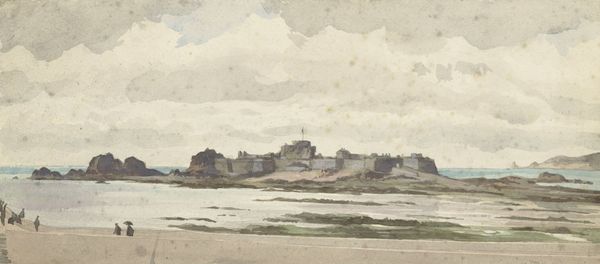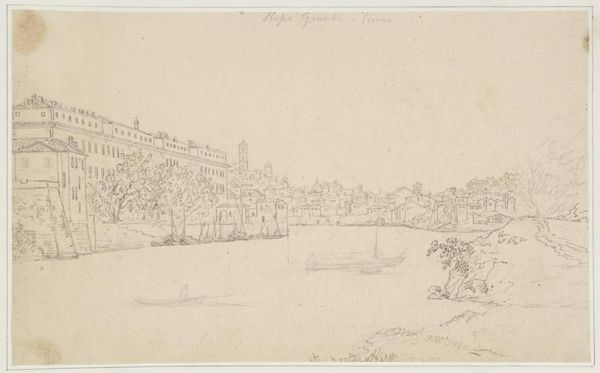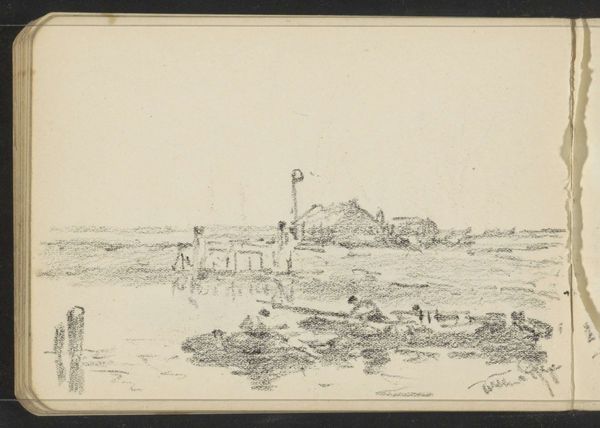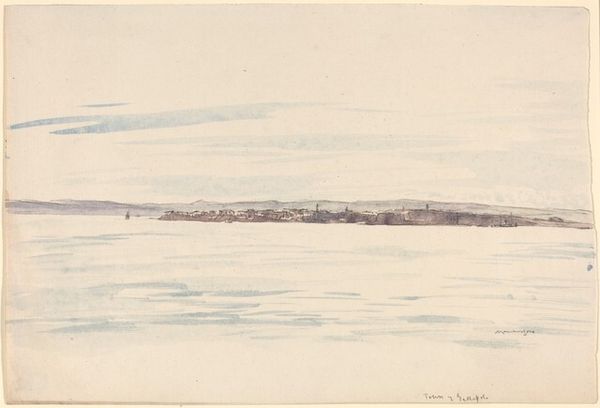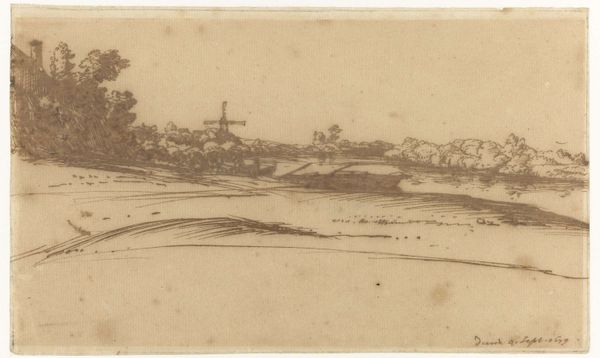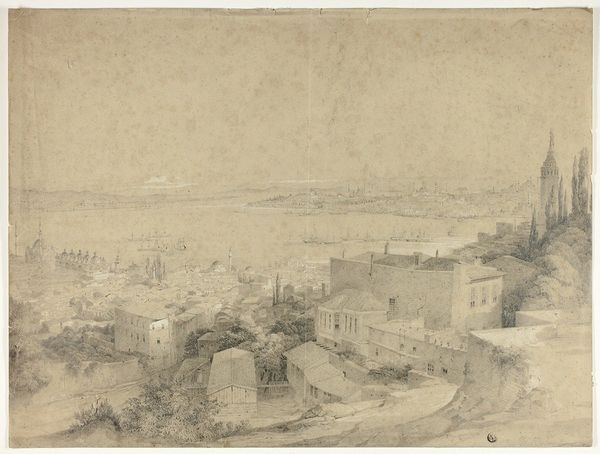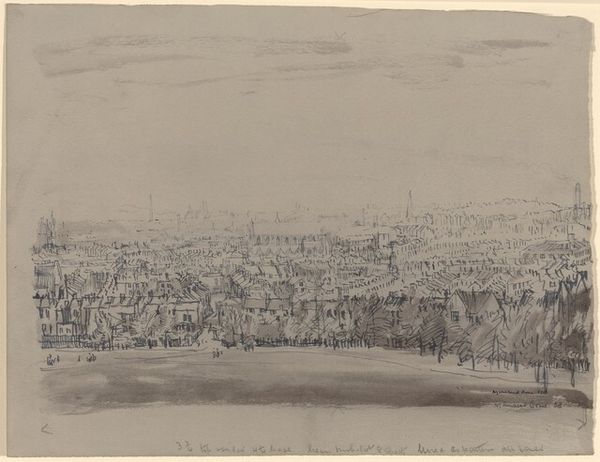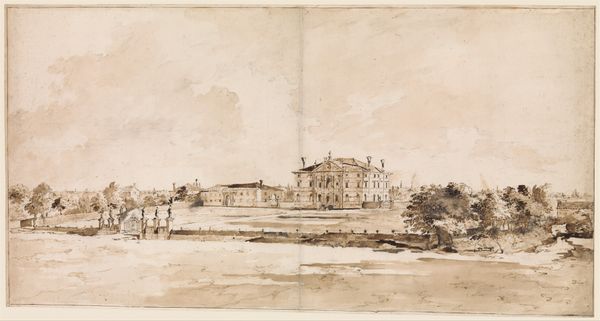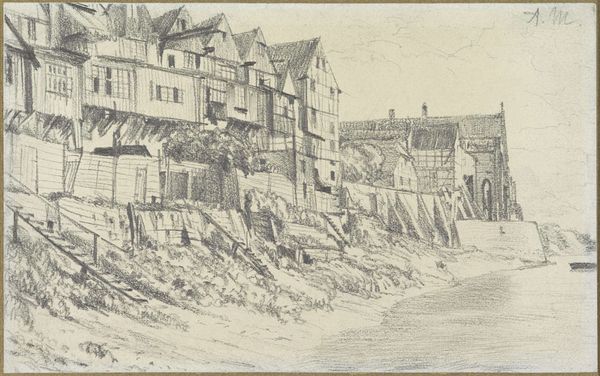
drawing, ink, pen
#
pen and ink
#
drawing
#
landscape
#
etching
#
ink
#
geometric
#
line
#
pen
#
cityscape
#
realism
Dimensions: overall: 21.3 x 29.1 cm (8 3/8 x 11 7/16 in.)
Copyright: National Gallery of Art: CC0 1.0
Editor: This is Muirhead Bone’s "Roman Bridge, Zamora," rendered with pen and ink. The subtle tonal variations achieve a compelling depth. It almost feels like I’m looking at a faded photograph, or an old memory. What do you see in this piece? Curator: The ink drawing invites consideration of Bone’s labor and the means through which the image takes shape. Look at the meticulous line work! Notice how Bone uses the pen to describe the weight of the stone and the passage of time. It speaks of process, doesn't it? The visible labour. I wonder how the ready availability and quality of ink and paper in this era shaped such a work? Editor: So, you’re focusing on the physicality of the piece, the process itself, rather than, say, the history represented by the bridge? Curator: Exactly. The Roman bridge isn’t just a subject; it is part of a system of resources, production, and circulation of materials and labour. The drawing renders architecture into a commodity of sorts – accessible, distributable. How might its meaning shift based on its intended consumer? Editor: That makes sense. It’s easy to get lost in the imagery, but you're directing my attention to the drawing as a physical object and a product of labor and access. Curator: Precisely. By investigating the work of Bone, we understand the materials and labour that converge to materialize history. Editor: So, thinking about the production and distribution changes my understanding of the image itself. Thanks for your insight! Curator: A pleasure. It’s crucial to ask, “what were the material conditions?” The object provides us with ways of asking!
Comments
No comments
Be the first to comment and join the conversation on the ultimate creative platform.
